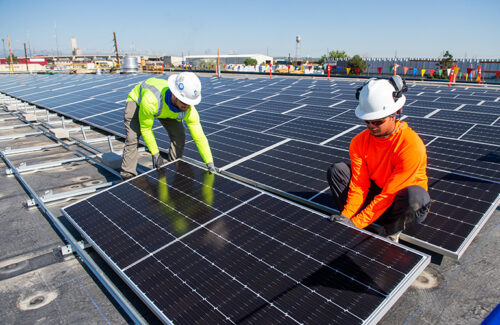As the deployment of solar panels becomes increasingly common, commercial lending institutions will increasingly encounter buildings, fields, and parking lots covered by photovoltaic systems. When calculating mortgage loans for commercial real estate, lenders will be in one of the following three situations: the owner owns solar panels; Owners rent out their roofs, premises, or parking lots to third parties for the installation of solar panels; Alternatively, the owner can lease the solar panel array through a Power Purchase Agreement (PPA), but does not own the panels or system.
Each situation has different impacts on lenders, and understanding this is crucial for guiding solar related financing.
The owner also owns solar panels
When the owner also owns solar panels, the lender should treat the solar panels as if they were any other assets or fixtures owned by the owner. The lender should submit a Uniform Commercial Code 1 (UCC-1) fixture on the solar cell array, which allows the lender to seize relevant property in the event of customer default on payment. But it should be pointed out that if the solar array is financed separately, the lenders may not be the first batch of lenders in this situation.
In addition, the lender should submit UCC-9 (Framework for Transactions Involving Personal Property) and ensure that the loan documents include provisions to safeguard the interests of the owner in investment tax credits (ITC) related to solar panels. For lenders, refinancing existing solar panels may also be advantageous. This ensures priority in UCC-1 and UCC-9 applications and benefits the lender with a 30% ITC.
Renting out the property to a third party
If the property owner of a building rents out the roof, site, or parking lot to a third-party owner (TPO) of a solar array and only receives rental income, then this arrangement should be treated like any other lease. Lenders can capture it through standard allocation of leases and rent, ensuring regular payments.
Amphetamine
When building owners lease solar cell arrays from TPO, this arrangement typically involves the retention of PPA and UCC-1 fixtures for solar panels and ITC. PPA is a contract between the owners of solar energy systems, in which the construction of solar cell arrays does not require any upfront fees from the owners. TPO typically submits UCC-1 to protect its interests in solar properties in the event of borrower default.
Many long-term solar leases are sold on installment payments, and owners acquire ownership of the array over time. Lenders can determine whether the lease is closer to sale by checking if the landlord can purchase the array at a symbolic cost at the end of the lease term and seeing who benefits from ITC. If the structure of the lease is similar to installment sales, the lender should carefully submit UCC-1 and UCC-9 to ensure their interests in the group and ITC, even if they may not occupy the primary position of financing.



